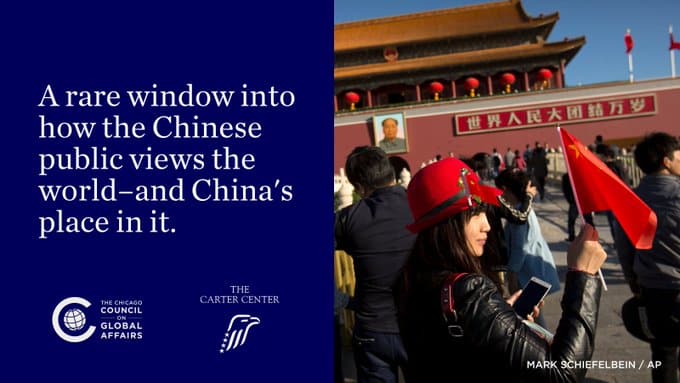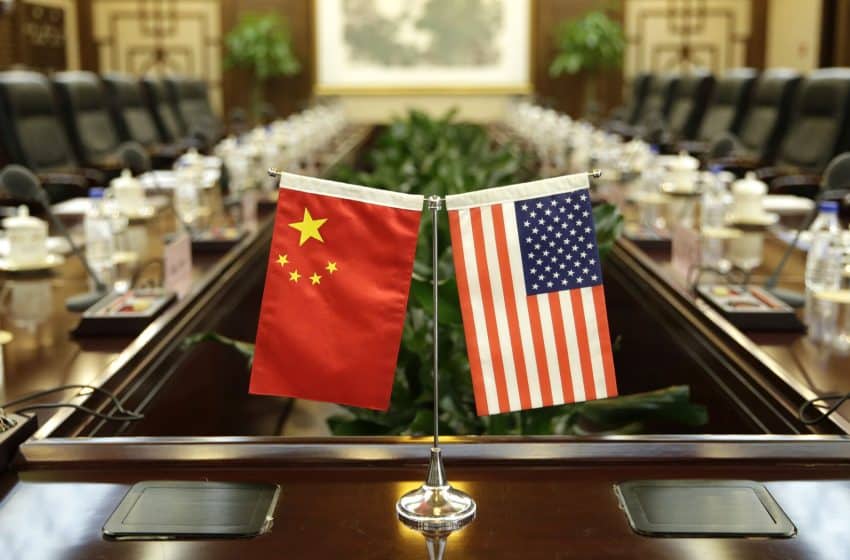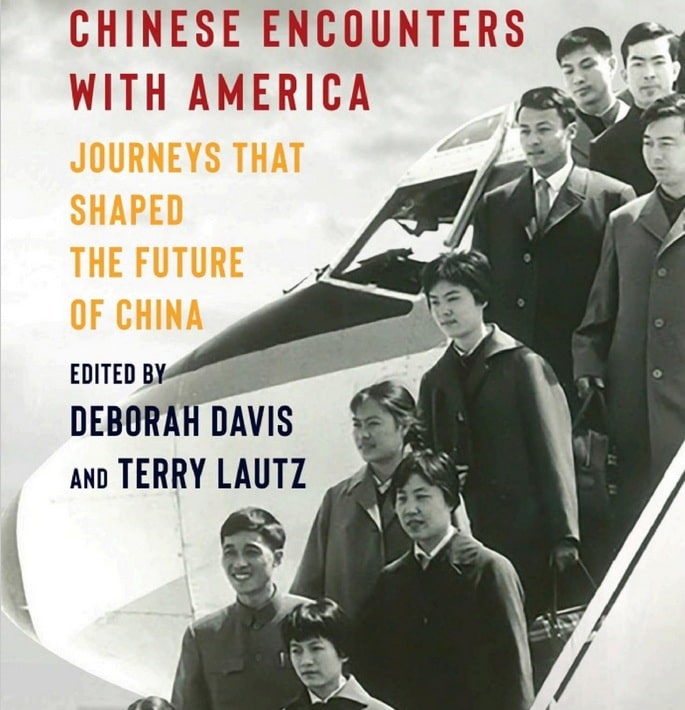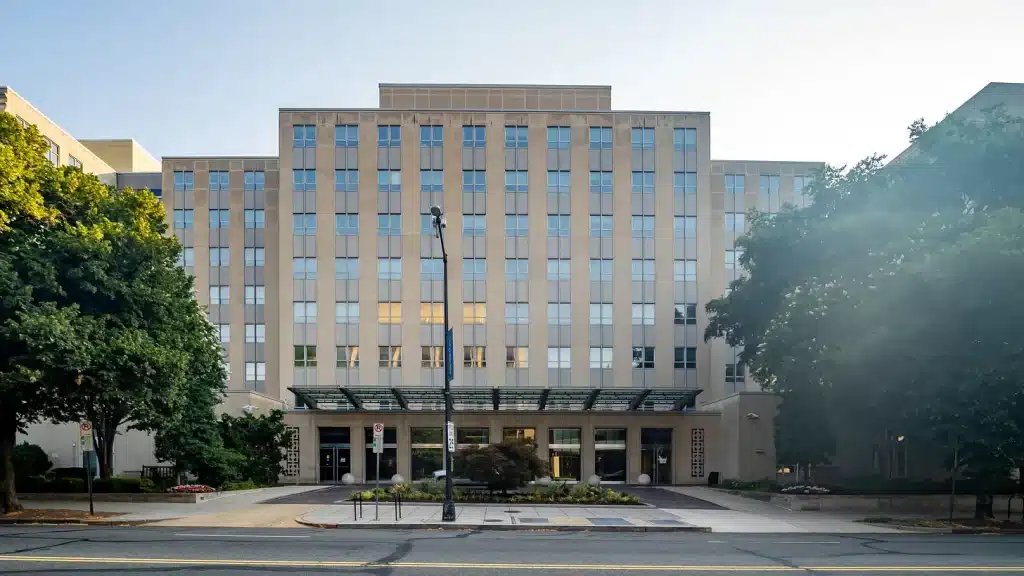President Trump’s Quiet Diplomacy Behind U.S.–China–Japan Phone Calls
“The Little Ball that Moves the Big Ball”: Commemorating the 53rd Anniversary of “Ping Pong Diplomacy”
- Analysis
 Yingyi Tan
Yingyi Tan- 04/23/2024
- 0
On April 10, 1971, 15 American table tennis players and team officials, accompanied by several journalists, arrived in Beijing. This marked the first time Americans had been allowed into China since the establishment of the People’s Republic of China in 1949. A mere ping pong ball played a pivotal role in reopening diplomatic channels between China and the United States after 22 years, serving as a symbolic bridge reconnecting the two nations. Henry Kissinger once remarked, “Against the backdrop of significant differences between the U.S. and China on crucial issues, ‘ping pong diplomacy’ embodies the hopes of many for the future. It suggests that mutual understanding between the peoples of our two countries can be achieved, recognizing the importance of both in the global structure and economy.” This article revisits the history of “Ping Pong Diplomacy,” its vital role in easing tensions between China and the US, and how it has evolved in recent years.
An “Accidental” Encounter
The 31st World Table Tennis Championships in Nagoya, Japan, in 1971, proved to be an unusual sports event for several reasons.
First, it marked the international “comeback” of the Chinese table tennis team, which had missed two consecutive championships due to the Cultural Revolution and other political factors. By then, the Chinese team had established itself as a formidable force in the field of table tennis, making their return at the Nagoya Championships particularly noteworthy. Secondly, in March 1971, a military coup led by General Lon Nol in Cambodia ousted Prince Sihanouk’s regime. The Chinese government quickly declared its support for Prince Sihanouk and secretly instructed its players to forfeit matches against any competitors from the Lon Nol regime.
However, these anticipated athletic and political upheavals were overshadowed by a serendipitous off-field incident.
On the afternoon of April 4, in the midst of the tournament, 19-year-old American player Glenn Cowan from Los Angeles mistakenly boarded the bus reserved for the Chinese team. This was during the Cold War, and diplomatic relations between China and the United States were non-existent. Initially, an awkward silence filled the bus, but it was unexpectedly broken when Zhuang Zedong, a three-time world champion from China, extended a friendly gesture by giving Cowan a silk-screen portrait of the Huangshan mountains.
The unexpected camaraderie between a Chinese and American athlete quickly became sensational news. Photographs capturing their handshake and conversation were prominently featured on the front pages of Japanese newspapers the next day. In a gesture of goodwill, Cowan presented Zhuang Zedong with an athletic shirt with a peace symbol and the Beatles’ lyric “Let It Be.” On the third day, Harrison, the deputy leader of the American delegation, took a bold step by formally requesting an invitation for the U.S. team to visit China.

Such a request, though sudden and audacious, was in fact very much grounded in strategic considerations. Since his inauguration in 1969, U.S. President Richard Nixon had regarded the nuclear-armed People’s Republic of China as a potential ally. He believed that fostering better relations with China was essential for the U.S. to gain an advantage over the Soviet Union during the Cold War. As tensions with the Soviet Union escalated, China was equally keen to enhance its relations with the U.S. to mitigate Soviet influence and to bolster its bid for United Nations membership.
By April 1971, the ice between U.S.-China relations was visibly starting to melt: Nixon had consistently emphasized the importance of improving ties with China as a key foreign policy goal. Mao Zedong, after watching the 1970 National Day parade, invited Edgar Snow, the American journalist and author of “Red Star Over China,” to join him on the Tiananmen rostrum. Just days before this fortuitous meeting, Graham Steenhoven, the head of the American table tennis team, had jovially inquired to the Chinese delegation, “I hear you’ve invited teams from five countries to visit; when will it be our turn?” By that time, the U.S. had already removed the travel restrictions to China for its citizens, allowing visits at any time provided that visas were secured.
The impromptu exchange between Cowan and Zhuang proved to be the perfect catalyst for the long-sought “ice-breaking” between the two nations. Despite the reservations about U.S. policies on Taiwan and its military activities in neighboring countries, the Chinese government ultimately welcomed the invitation and agreed to host the American team. Reflecting on this pivotal moment, President Nixon later noted in his memoir, “I was as surprised as I was pleased. I had never expected that the China initiative would come to fruition in the form of a ping-pong team.”
Trip to China
After the World Table Tennis Championships, representatives of the American ping pong team flew from Japan to Hong Kong and arrived in Beijing on April 10th. On their first day in Beijing, the team members visited Tiananmen Square, the Forbidden City, Tsinghua University, and the Great Wall, and watched a revolution-themed opera called “The Red Detachment of Women.” American delegates were treated like visiting diplomats with lavish banquets and warm services, but Graham Steenhoven also noticed that in the opera house, a “Welcome American Team” banner had been hung over a wall painted with the words “Down With the Yankee Oppressors and Their Running Dogs!”
On April 13th, a ceremony welcoming the American table tennis team was held at the Capital Gymnasium, followed by some friendly exhibition table tennis matches. Given the difference in skill levels, the Chinese organizers specially arranged mixed doubles matches between Chinese and American players, promoting the motto “Friendship First, Competition Second.”

On the second day, Chinese Premier Zhou Enlai hosted table tennis delegations from Canada, the United Kingdom, Colombia, Nigeria, and the U.S. at Beijing’s Great Hall of the People. During his dialogue with the American team, he earnestly requested, “Please convey the greetings of the Chinese people to the American people upon your return. Historically, the peoples of China and the U.S. engaged frequently, a practice which was long interrupted. Your visit marks a re-opening of the doors to friendly exchanges between our two nations. We are confident that these friendly exchanges will receive widespread approval and support from the majorities in both countries.”
Less than ten hours after this meeting, President Nixon announced five significant measures to lift restrictions on China. These included issuing visas, easing currency controls, eliminating supply and export limitations, and ending a 20-year trade embargo against China.
Three months later, then U.S. Secretary of State Henry Kissinger secretly visited China, where he was welcomed by Chairman Mao Zedong and Premier Zhou Enlai.
Thawing of Sino-American Relations
The ripple effect of this “Ping Pong Diplomacy” only continued. The American table tennis team’s visit to China ignited a nationwide “ping pong craze” in the U.S. At a White House meeting, Nixon even tried his hand at the sport, wielding a Chinese-style paddle. Glenn Cowan and other members of the visiting American team rapidly became household names, engaging in speeches, performances, and advertisements across the country.
In February 1972, Nixon made his official visit to China, which marked the first time in history that an American president had traveled to the Chinese mainland. With Zhou Enlai and Mao Zedong, their meetings culminated in the issuance of the historic Shanghai Communiqué, which laid the groundwork for normalizing bilateral relations. The two pandas gifted to the U.S. by China also received celebrity treatment in Washington.
In April of the same year, the Chinese table tennis team landed in Detroit, marking the first official visit from the PRC to the U.S. Zheng Min, a member of the Chinese delegation, remembered the warmth and enthusiasm of the American people despite the language barrier. During exhibition matches at an automobile factory, workers greeted them with genuine handshakes and warm welcomes. Nixon also remarked during the White House reception, “In competition, there are winners and losers, but the greatest victor here is the friendship between the American and Chinese peoples.”

This mutual visit of table tennis teams was followed by visits from Chinese gymnastics and martial arts teams to the U.S., and reciprocally, American teams excelling in swimming, athletics, basketball, and gymnastics visited China, further strengthening ties between the two nations.
Gallup polls show that from 1950 to 1970, the majority of Americans opposed restoring the PRC’s seat at the United Nations. However, after the American table tennis team’s trip to China in 1971, 45% of the public expressed support while 38% opposed, marking the first time supporters outnumbered opponents. “Ping Pong Diplomacy” not only thawed diplomatic and economic relations at the national level but also reopened the doors to cultural exchanges between the people of China and the U.S. The role of table tennis in this historical process has been famously commemorated as “the small ball moved the big ball.”
Can History Repeat Itself?
After 1972, there have been numerous people-to-people exchange activities between Chinese and American table tennis players commemorating “Ping Pong Diplomacy.” Table tennis has thus become the most emblematic sport in U.S.-China relations, earning the title of “the sport that changed the world.”
In 2008, a three-day event commemorating “Ping Pong Diplomacy” was held at the Richard Nixon Library and Museum in California. Players from the Chinese and American table tennis teams who had experienced the visits first-hand met again and played a friendly match.
In 2011, Xi Jinping, then Vice President of China, and former U.S. President Jimmy Carter jointly attended a ceremony at the Great Hall of the People in Beijing to commemorate the 40th anniversary of Ping Pong Diplomacy.

In 2021, as U.S.-China relations reached a low-point due to the pandemic and the closure of consulates, the World Table Tennis Championships were held in the U.S. for the first time. To celebrate the 50th anniversary of ” Ping Pong Diplomacy,” the Chinese and American table tennis associations agreed to pair athletes from both countries for mixed doubles matches.
At Houston’s World Championships, America’s top male player, Kanak Jha, partnered with Chinese female star Wang Manyu, while Chinese male standout Lin Gaoyuan teamed up with top American female player Lily Zhang, eliciting enthusiastic cheers from the crowd from both countries. Lily said after the matches that “I really wanted to do well not only for a good result, but to showcase to the rest of the world that our two countries can work together, and sport is something that can really bring us together and transcend all boundaries.” Steve Dainton, CEO of the International Table Tennis Federation, also remarked, “In Houston, we once again witnessed the unique power of sports and how table tennis can facilitate dialogue and foster mutual understanding.”
This year, marking the 45th anniversary of diplomatic relations between China and the U.S., the University of Virginia’s table tennis delegation visited Beijing, collaborating with players from Tsinghua University for matches. The Peking University table tennis team reciprocated by traveling to the United States to participate in a series of events commemorating this event.
“Ping Pong Diplomacy,” akin to “Panda Diplomacy,” exemplifies how cultural exchanges can influence political developments in modern U.S.-China relations. In the 1970s, China’s “national animal” and “national sport” made their way abroad, changing Americans’ perceptions of China and similarly reshaping the Chinese outlook on the outside world and their future expectations.
However, more than fifty years later, table tennis remains a niche sport in the U.S., leases for pandas are expiring, Confucius Institutes at American universities are closing, and the number of American students in China has drastically decreased to double digits. Amid these significant challenges to U.S.-China relations, revisiting “Ping Pong Diplomacy” aims to sustain and enhance the long-established cultural exchanges between the two nations. It is hoped that the inspiration and strength from these historical successes will enable ordinary citizens to bridge bilateral strategic and ideological divides, revive friendships, and ensure that geopolitical competition does not escalate into uncontrollable conflict or even war between the two countries.
Sources:
《How Ping-Pong Diplomacy Thawed the Cold War》
Chinese version: “小球推动大球”: 纪念 “乒乓外交” 53周年







